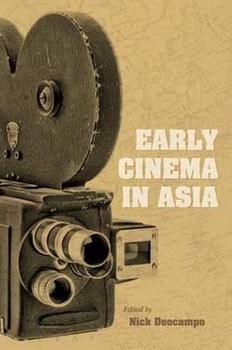
One of the favorites among the articles I have written is “One Print in the Age of Mechanical Reproduction,” a piece I wrote for the online peer-reviewed film journal Screening the Past. In it I tried to come to grips with one of the oddities that tends to define early cinema in Japan: the fact that for much of the silent period, film studios only produced one print of the movies they made, even though they had technology to produce many more. In a play on one of the translations of the title of Walter Benjamin’s famous essay, “The Work of Art in the Age of Mechanical Reproduction,” I was asking why the Japanese film world seemed to be shunning the definition of cinema as an art of mechanical reproduction.
The article was also an opportunity for me to engage in various methodologies. Basically, this was an exercise in industrial history, but I put forward and tested various hypotheses about the reasons for this practice, starting with the economic, but then proceeding to issues of society, politics, and culture. It was a way to start thinking about the material versus cultural determinations of Japanese cinema—or our inability to separate them. It also provided me with an early opportunity to talk about the culture of “mixture” I elaborated on in Visions of Japanese Modernity, and which Miriam Silverberg described in different terms in Erotic Grotesque Nonsense. While I don’t think it is one of my best essays, it was one I enjoyed writing and still think is important.
The problem is that it is no longer accessible on the Screening the Past website. They revised the website a few years ago and for some unfathomable reason, decided to let most of their previous articles disappear into the ether. This is one of the problems with online publications—and essentially the ephemerality of the digital—and is one reason we should be careful as academic publishing jumps on the digital bandwagon. The article has been saved by one or more web archives, but those don’t show up on web searches, so the piece has not received as much attention as it deserves.
I was thus very thankful that Nick Deocampo allowed me to revise it a bit for the anthology he edited for Indiana University Press: Early Cinema in Asia. It is a quite fascinating publication, likely the first of its kind. It features pieces on early film in the Philippines, China, Hong Kong, Taiwan, Indochina, India, Malaysia, Iran, Thailand, the Asian Pacific, and Central Asia. Authors include Wimal Dissanayake, Lee Daw-ming, Stephen Bottomore, P.K. Nair, Yamamoto Ritsu, Nadi Tofighian, and my Yale colleague Charles Musser.
Here is the bibliographic information for my piece:
- Aaron Gerow. “One Print in the Age of Mechanical Reproduction: Film Industry and Culture in 1910s Japan,” Early Cinema in Asia. Ed. Nick Deocampo. Bloomington: Indiana University Press, 2017. Pp. 140–156. ISBN 978-0-253-02728-3

